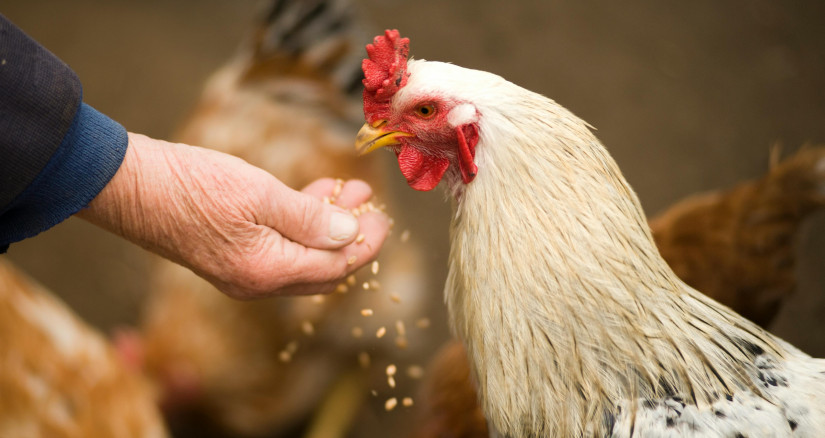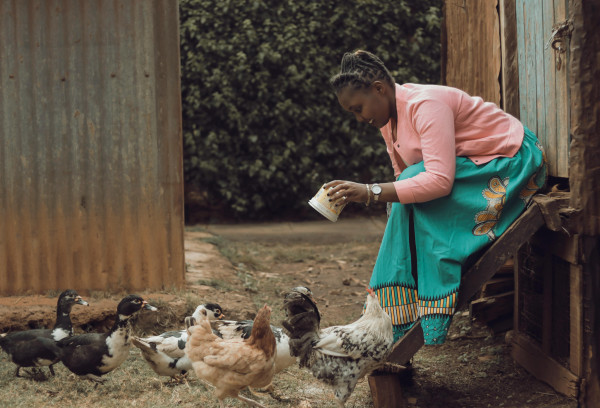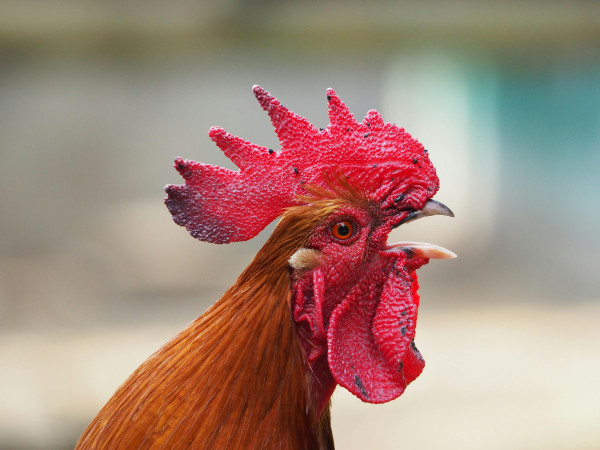
Breaking the Cycle: Is It Time to Rethink Our Poultry Depopulation Strategy?
By now, nearly everyone has likely heard of the current outbreaks of Highly Pathogenic Avian Influenza (HPAI) H5N1 in the U.S. and across the globe. These outbreaks have persisted in various countries for the past three to four years. Most recently, outbreaks among commercial poultry flocks in the U.S. have surged to alarming rates. In the past three years, this has resulted in the depopulation of over 160 million commercial poultry birds in the US alone. Depopulation of these birds is the humane slaughter and disposal of entire commercial poultry flocks that were found to test positive for HPAI H5N1.
This is the historical mitigation plan the U.S. has followed for HPAI outbreaks. Two reasons given for this are that HPAI has an extremely high morbidity rate (the percentage of birds that become sick when exposed to the virus) and a very high mortality rate (the percentage of birds that die due to becoming sick). Therefore, the thought process is that if HPAI is identified in a flock, they will likely most all get sick and die a very unpleasant death; thus, why not spare the affected birds from suffering through depopulation and reduce the risk of the virus spreading?
Additionally, there has been increasing evidence of cross-infections among dairy cows, cats, and humans, as well as other species. Therefore, controlling the virus in poultry flocks is of utmost importance as we work to mitigate its spread to these other animals.
There are other reasons for the mass depopulation of flocks during outbreaks. One is to reduce close human farm worker exposure to thousands of potentially sick birds on a poultry farm. Also, the current landscape of indemnification—how poultry farmers are compensated by USDA for exposed birds to H5N1—is that poultry farmers are reimbursed for depopulated birds, not for sick ones. Another reason cited for depopulation is that historically, HPAI outbreaks have been cyclical and largely influenced by seasonal changes and migratory bird patterns.

Photo by Nicholas Girthiri
Speaking of migratory birds, we know that wild birds are the main natural reservoir for H5N1. Science also indicates that whenever a wild species is a source of a pathogen such as HPAI H5N1, it cannot be eradicated. This implies that the pathogen in this case H5N1, will likely become endemic. Endemic means it will remain in our environment and will probably always be present at a certain level within the population.
One of the issues with H5N1 is the high morbidity and mortality rates in domestic birds. This means that our current practice of depopulating affected flocks does not allow for natural immunity to potentially develop in individual birds that survive the infection. Another major concern with depopulation is that even when new replacement birds are introduced, there are no guarantees that these new birds won’t also be exposed to H5N1, despite a poultry farm making every effort in sanitation, segregation, and isolation. Furthermore, the time required to replace a poultry flock can disrupt the food supply chain and the various industries that rely on it. This situation could lead to a vicious cycle of poultry-derived ingredient shortages, even when best practices are implemented.
Recently, the U.S. Department of Agriculture (USDA) granted conditional approval for a killed virus vaccine for Avian Influenza H5N2. Conditional approval means the vaccine may be used under USDA authorization but cannot be sold or used voluntarily without their authorization. Avian influenza vaccines have already been utilized in countries such as China, Mexico and France, and killed virus vaccines generally offer the lowest potential for side effects compared to modified live virus vaccines or even mRNA vaccines, which have controversial characteristics in their own right. According to research, birds vaccinated against the H5N2 strain seem to have developed good immunity against H5N1.

Photo by Pixabay
Some poultry industry organizations support vaccination, while others oppose it. One of the primary reasons cited for not vaccinating poultry is that some countries do not permit the import of vaccinated poultry products, and some U.S. poultry organizations understandably use this as a reason for their reluctance to vaccinate their flocks. The real challenge appears to be the global education and collaboration of animal health regulatory organizations. In the past six months, 63 countries have reported positive cases of H5N1 in birds, mammals, humans, or some combination thereof. This current outbreak of HPAI H5N1 could reach pandemic proportions, potentially harming the global poultry product supply, not just that of currently affected countries like the U.S.
Historically, poultry farms commonly vaccinate against other viral diseases such as Marek’s disease, Newcastle disease, infectious laryngotracheitis, and infectious bursal disease. These vaccines have been available for decades and are widely used globally.
Given the current landscape of H5N1 outbreaks in the U.S. and around the world, it appears that sticking to traditional methods like depopulation may not be the best approach now. Our global animal health regulatory bodies need to reach a better agreement to address this issue effectively.
Science is a constant evolution of learning and adaptation. The potential effective vaccination of poultry to help control this and future outbreaks of HPAI should be considered by international coalitions of animal health organizations. In addition, other measures such as accurate and available commercial testing capabilities for poultry products would also be valuable tools in this challenge we are facing now with HPAI H5N1. To learn more about how the industry should be preparing, BSM Partners shares more information on H5N1 here.
Follow us on LinkedIn for the latest updates on all things happening here at BSM Partners.
About the Author
Dr. Bradley Quest, DVM, is the Principal Veterinarian at BSM Partners. He has practiced clinical veterinary medicine, developed and tested hundreds of pet food and health products, performs extensive animal health research, and helps navigate pet food ingredient approval for clients.
This content is the property of BSM Partners. Reproduction or retransmission or repurposing of any portion of this content is expressly prohibited without the approval of BSM Partners and is governed by the terms and conditions explained here.